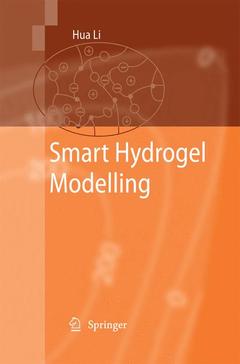Smart Hydrogel Modelling, 2009
Auteur : Li Hua

First book on the subject
Smart hydrogels are important new materials used in high tech and medicinal applications
Useful reference source with benchmark results to compare and verify experimental data
Includes supplementary material: sn.pub/extras
Date de parution : 11-2014
Ouvrage de 359 p.
15.5x23.5 cm
Disponible chez l'éditeur (délai d'approvisionnement : 15 jours).
Prix indicatif 158,24 €
Ajouter au panierDate de parution : 10-2009
Ouvrage de 359 p.
15.5x23.5 cm
Thèmes de Smart Hydrogel Modelling :
Mots-clés :
BioMEMS; Hydrogels; MECe; MECpH; MECpHe; MECtherm; MEMS; Polymer Science; Smart Materials; Soft Matter; development; microelectromechanical system (MEMS); polymer; simulation



